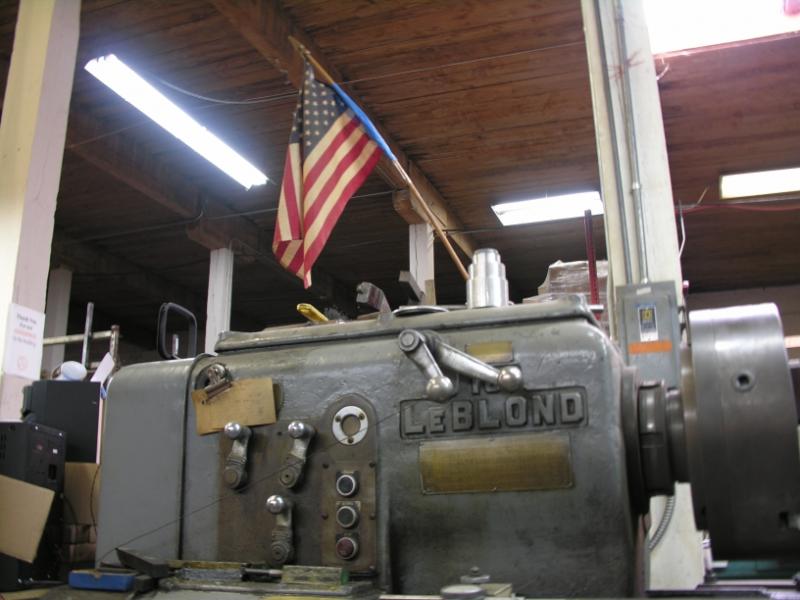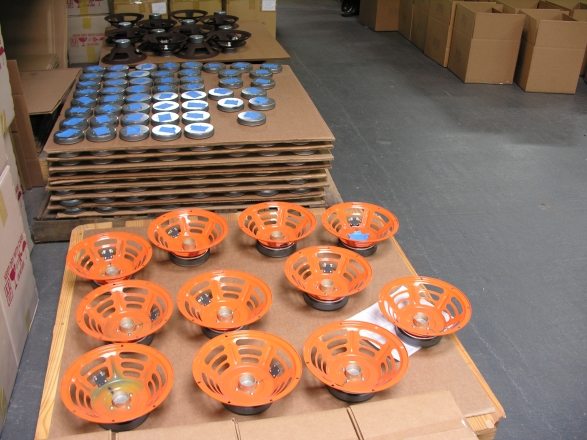Your Cart is Empty
NOW FREE SHIPPING TO 48 CONTIGUOUS UNITED STATES ON ALL ORDERS!!!
The Making Of A (Tone) Star:
by vaughn skow January 10, 2012 3 min read
A few weeks back, I received an email from a WGS fan asking if I could do a video on just how the WGS speakers are made. First the bad news: The short answer is no. WGS uses a few very distinctive and proprietary techniques, and as much as they would love to go bragging to the world, some competitors might just seize the opportunity to do a little unauthorized "borrowing". Now the good news: There IS a bunch I can disclose! So, read on!
Okay, so ... where to begin? I guess I’ll begin where speakers begin, raw metal. WGS does, of course have a full metal shop; it’s kinda like the metal shop I remember from high school, except about a gazillion times bigger. I don’t remember my high school shop having any metal lathes quite like this monster:

I think when they are not making speakers; they make drive shafts for aircraft carriers!
In its raw form, steel ain’t really all that pretty. That’s where the paint booth comes in. David Young, WGS’s founder and President actually designed and fabricated many of the WGS paint booth’s more unique features. I can’t show you that, but you have all seen the end result, pretty, right?

Oh, and a nice little side-bar note here: David actually is the creative mastermind
that comes up with most of the WGS powder-coat finishes. Some guys take a trip to the beach, or maybe
just the Y to de-stress and focus; David takes a trip to the paint booth! We all benefit from David’s many hours in the
booth; the WGS line not only sounds superior, they look it, too! My personal favorite is the Retro 30 with its
hand-hammered copper look, truly one of David’s masterpieces.
Okay, so on to how the various pieces are put together to form a finished speaker. This is the cool part, it’s a trip back to 1957. In this case, I think of it as a trip back to the future! I can’t help but feel as though I’m standing in the Fender Electronic Instruments factory in 1950-something as I watch the speakers being hand-made. Don’t believe me? Here is an actual pic of a WGS speaker (a bass guitar model) being hand-assembled.

Believe me now?
After they are done, the final step is actual audio testing. Dean Birdsong, production manager, does this personally. Dean is the real-deal, folks. He’s made speakers his entire life, he ain’t just pretending to be an expert, he is an expert. If a speaker doesn’t measure up to Dean’s standards, it doesn’t see the light of day. Wish I had a pretty pic of Dean doing his thing, but, well ... if you knew Dean, you would know that pictures just ain’t really his thing. Nuff said.
That brings us to the final step, getting the speakers out to folks who adopt them into their families and love them as if they were one of their own children. In this, everyone pitches in a hand. Resident guitar playing guru Daniel Morrow sometimes goes a bit overboard in pleasing customers. I just can’t get enough of this pic of Daniel; a customer requested a Unicorn with his speaker, Daniel whipped this one up on the customers packing box. When you find another speaker manufacturer who will accommodate their customers to this level, I’ll personally eat their speakers.

Wow, wasn’t that fun? Next week, I’ll be doing some cool demos; I’ll be trying to find the perfect love mate for my 1959 Fender Deluxe. She’s a sweet old gal who truly deserves to find "Mr. Right". See ya all then!
Leave a comment
Comments will be approved before showing up.
